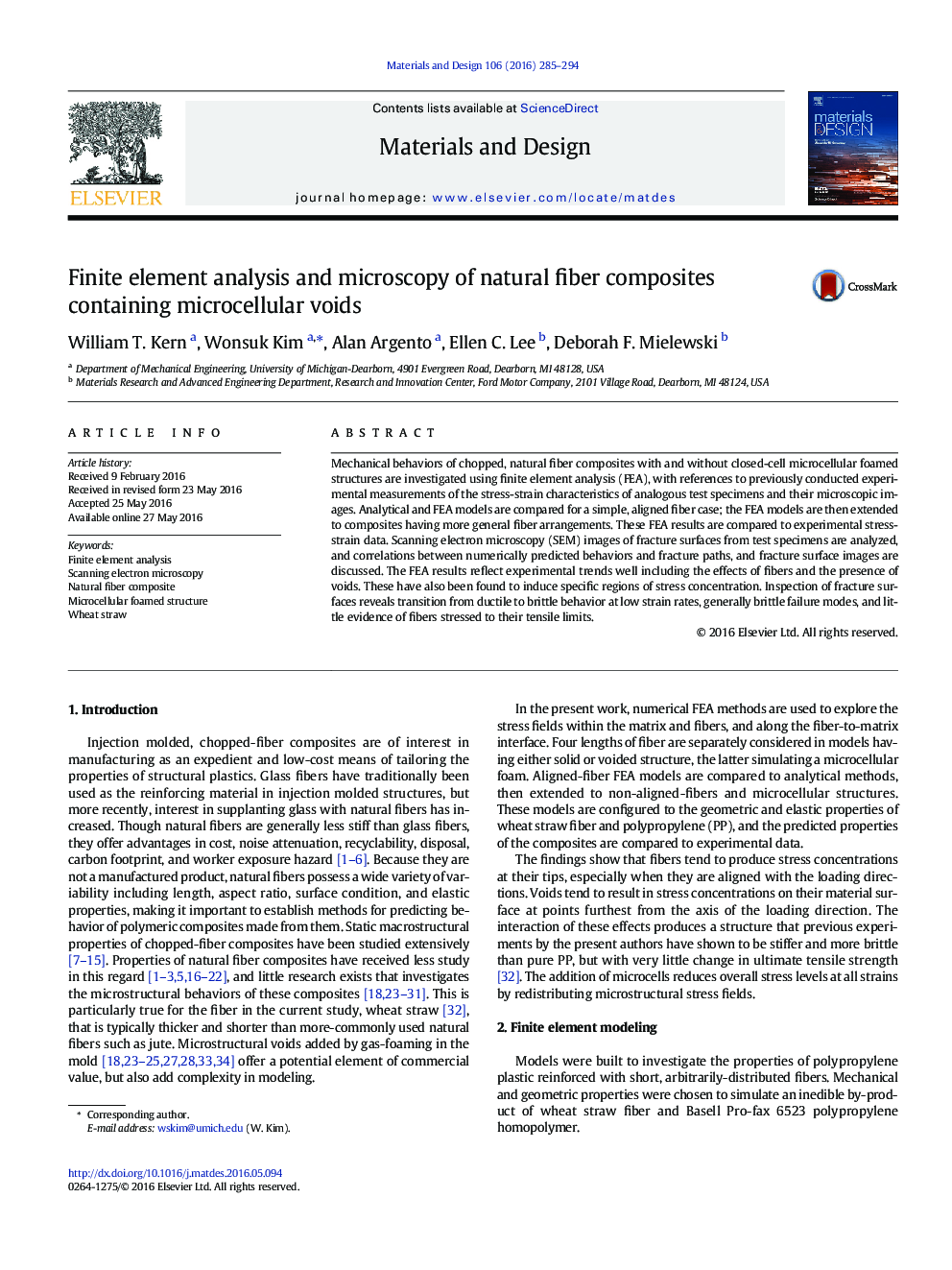| Article ID | Journal | Published Year | Pages | File Type |
|---|---|---|---|---|
| 827888 | Materials & Design | 2016 | 10 Pages |
•Finite element models of wheat-straw-fiber/polypropylene composites with microcells have been developed and validated.•Simulation results reflect experimental trends well including the effects of fibers and the presence of microcells.•The addition of microcells reduces overall stress level of specimens under tensile loading by redistributing stress fields.•Microscopic images of fracture surfaces show ductile-brittle transition at low strain rates and generally brittle failure.
Mechanical behaviors of chopped, natural fiber composites with and without closed-cell microcellular foamed structures are investigated using finite element analysis (FEA), with references to previously conducted experimental measurements of the stress-strain characteristics of analogous test specimens and their microscopic images. Analytical and FEA models are compared for a simple, aligned fiber case; the FEA models are then extended to composites having more general fiber arrangements. These FEA results are compared to experimental stress-strain data. Scanning electron microscopy (SEM) images of fracture surfaces from test specimens are analyzed, and correlations between numerically predicted behaviors and fracture paths, and fracture surface images are discussed. The FEA results reflect experimental trends well including the effects of fibers and the presence of voids. These have also been found to induce specific regions of stress concentration. Inspection of fracture surfaces reveals transition from ductile to brittle behavior at low strain rates, generally brittle failure modes, and little evidence of fibers stressed to their tensile limits.
Graphical abstractFigure optionsDownload full-size imageDownload as PowerPoint slide
